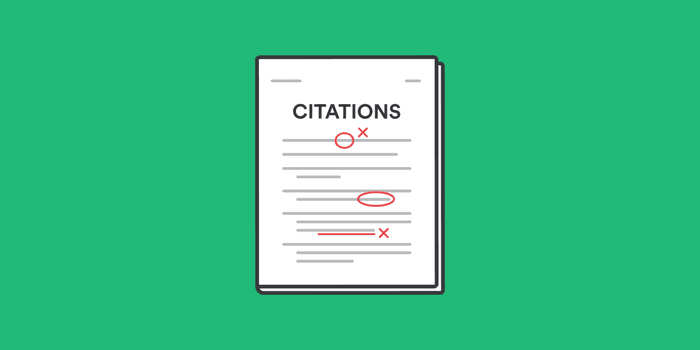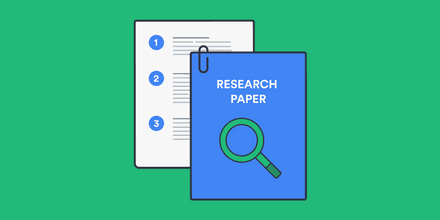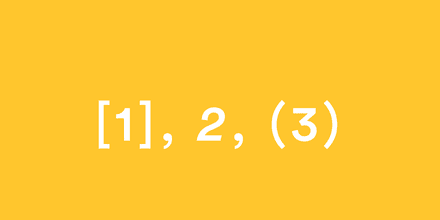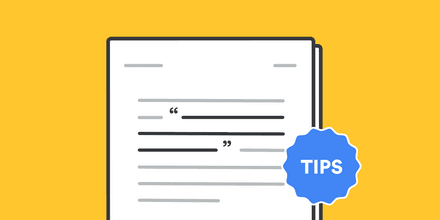
Citing sources is an essential part of the writing process, especially in academic writing. However, citation can be a confusing and challenging task—even the most experienced writers can make mistakes. In this post, we discuss some of the most common citation mistakes and how to fix them.
What is citation?
Put simply, a citation is a reference to a source of information used in a piece of writing. Citations serve a variety of purposes in academic writing, including giving credit to the scholars who have contributed to your topic and allowing readers to locate and verify the sources that you’ve used.
It is important to cite sources accurately and consistently, using the guidelines of the chosen citation style. Failing to cite sources properly can lead to accusations of plagiarism, which can have serious consequences.
Common citation mistakes
Here are some of the most common citation mistakes and how to fix them:
1. Forgetting to cite a source
One of the most common citation mistakes is simply forgetting to cite a source. This mistake can happen when you get caught up in the flow of writing or when you're not paying attention to the sources you're using.
To avoid this mistake, make sure to keep track of all your sources as you research and write, and cite them as you go. Don't wait until the end of your writing process to start citing your sources.
2. Incorrect formatting
Another common citation mistake is incorrect formatting. Different citation styles have different formatting requirements, so it's important to make sure that you're carefully following the guidelines.
For example, APA style requires a reference list at the end of the paper, while MLA style calls this a Works Cited page. Be sure to follow the citation style guidelines consistently throughout your paper.
3. Plagiarism
Plagiarism occurs when you use someone else's ideas, words, or work without giving them proper credit. It is a serious offense that can have major consequences, including failing grades, academic probation, and even expulsion.
To avoid plagiarism, make sure to properly cite all sources. Use a citation generator, like BibGuru, to help you avoid plagiarism. It's also important to know the difference between quoting, paraphrasing, and summarizing, so that you can cite accordingly.
4. Incomplete citations
Incomplete citations can be confusing and make it difficult for readers to find the source that you're referencing. Always double-check your citations to make sure that they're complete and accurate.
Include all the necessary information in your citations, such as the author's name, the title of the work, and the publication date. If you're using an online source, include the DOI or URL, when appropriate.
5. Incorrect information
Another common mistake is citing the wrong source or using incorrect information in your citation. This can happen when you're working with multiple sources and get confused about which information came from which source.
To avoid this mistake, check every part of each citation and watch out for incorrect information. Take the time to proofread your citations carefully and make sure that you understand the information you're using.
6. Mistaking the source type
One of the biggest errors that students make is mistaking the source type. In other words, you might cite a journal article as a website and end up with a completely incorrect citation.
Pay close attention to the origin of the source. Did it come from an academic database? If so, was it published in a journal? Did you find it via Google? Be aware that there are definite differences between how journal articles and websites are cited.
The bottom line
To avoid these citation mistakes, follow the guidelines of your chosen citation style carefully and proofread each citation. By paying attention to the details, you can ensure that your citations are accurate.
Frequently Asked Questions about common citation mistakes
🪣 What should be included in a citation?
All citations, no matter what the style, will include the author’s name, title, and publication date.
🧮 What should not be included in a citation?
Depending on the citation style you’re using, you might not include the publisher’s name. Additionally, you don’t need to include details like the author’s credentials or professional title in your citation. If you’re unsure about what to include in a citation, consult the style guidelines or ask your instructor.
💜 What are some common citation mistakes?
Common citation errors include forgetting to cite a source, missing or incorrect information, plagiarism, and mistaking the source type.
💠 What are the rules of citation?
The primary rule of citation is: when in doubt, cite. Additional rules include following the style guidelines and proofreading your citations before you submit your paper or project.
🐓 What is a citation?
Put simply, a citation is a reference to a source of information used in a piece of writing. Citations serve a variety of purposes in academic writing, including giving credit to the scholars who have contributed to your topic and allowing readers to locate and verify the sources that you’ve used.


